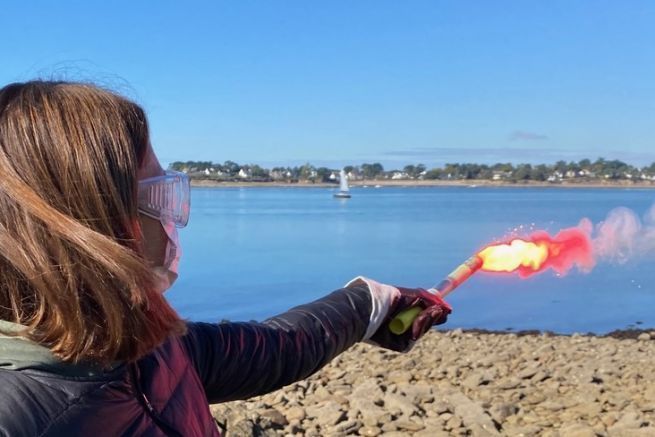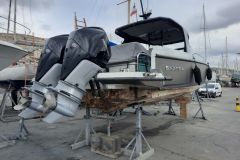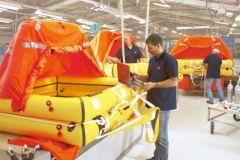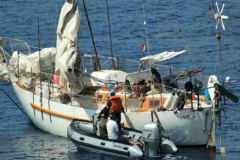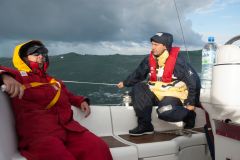Here is the advice we received during a World Sailing course at CEPIM in CRACH. Once the various rescue organizations were notified, we were able to test hand fires, smoke and parachute rockets.
The Equipment
The crew must be aware of the location where hand lights, smoke and flares are stowed. It is essential that the equipment is not out of date and that it is placed in a watertight and accessible place. It is also advisable to have near this pyrotechnics box, a glove resistant to high temperatures that you will use when handling these objects.
Hand Lights
Hand lights have a range of 1 to 3 miles by day and 6 to 10 miles by night. They will operate for 1 minute. They are therefore to be used when requesting visual assistance or to facilitate your location when help is approaching.
For all the hand fires, the flame goes upwards, i.e. the percussion system always goes upwards (Be careful when the percussion is in the other direction, it will surely be a fuse...).
There are two types of percussion at hand lights: Either a pull system that is pulled forward or a pin system that is pulled to the side (if you pull forward with the pin system, you risk pulling the primer out and the hand light will not be triggered). The plugs of the hand lights, on percussion, will go off at 50 meters. Attention, it is possible on some models that the ignition may take up to 5 seconds, time that must be respected before considering that the hand lamp does not work... In any case, you should always aim at a clear area and never point the machine at yourself.
There are several models of hand lights, so check which type you have to operate it in the right way on the day.
Practical advice : When hitting the lights by hand, always stand with your back to the wind, then raise your arm at 45°C and lower your eyes (luminosity and incandescent particles). If you are in the life raft, you will of course always have to have your arm on the outside of the raft.
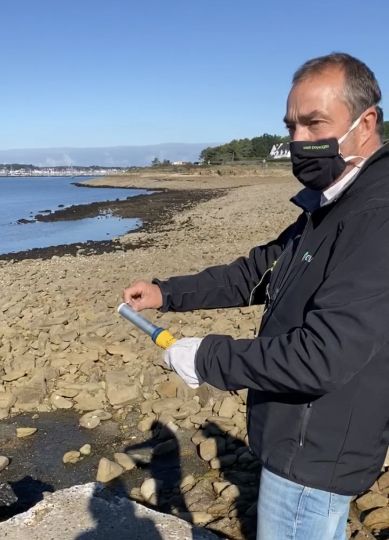
The Smokes
The Smokes are to be used only during the day, preferably for heliborne rescue. They have a range of 3 to 5 miles and operate between 3 and 6 minutes. It is important to know that beyond a force 4 wind, the dispersal of smoke will make the smoke generator less effective.
Once the cap is opened and the capsule removed, the smoke will be released. Therefore, it is imperative to throw it into the water. Contact with water will allow the can to cool down, which will prevent it from opening and allowing the powder to escape, risking setting fire to the boat. Once the smoke hits the can, it cannot be extinguished.

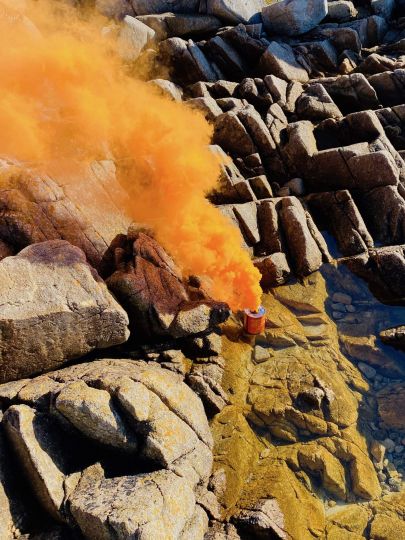
Parachute Rockets
Parachute rockets can be used both day and night to be spotted from a great distance. They have a range of 10 to 12 miles and their red star will operate for 40 seconds.
It is the most dangerous instrument on a boat. It should always be fired at arm's length and above the head because a rocket can go horizontally.
The percussion of a parachute rocket is done from the bottom this time, contrary to hand fire. There is always an arrow on the fuse that will indicate the direction of the flame's exit.
There are two types of percussion for fuses: either a small string to be pulled (the fuse is then held with one hand only), or a trigger (this one is preferable to be able to pull the fuse with two hands)
Even if the regulations specify that you can dispense with 3 parachute rockets if you have on board a VHF equipped with a DSC system coupled with a GPS that can pinpoint the position of your boat, they are still part of the liferaft armament and it is therefore preferable to know how to handle them.
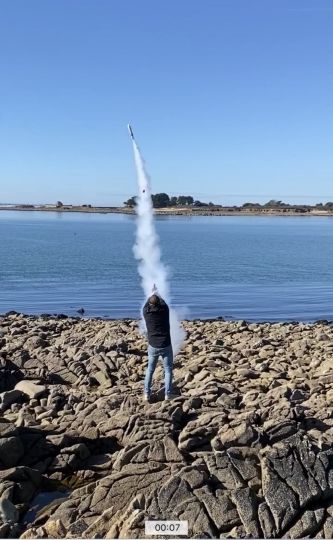
Lights and flares out of date.
It is important to have equipment in good working order so as not to add danger when you are already in a distress situation. Check the expiry date of your pyrotechnic devices. When they have expired, you can either take them back to your shipchandler, who will collect them for any purchase of new equipment of the same category, or drop them off at collections organized by training centres or take them to organizations specializing in pyrotechnic recycling. In any case, do not keep them on the ship and deposit them in specialised organisations, as a "failure to give a distress signal" is punishable by a 5th class fine of up to 1,500 euros.
